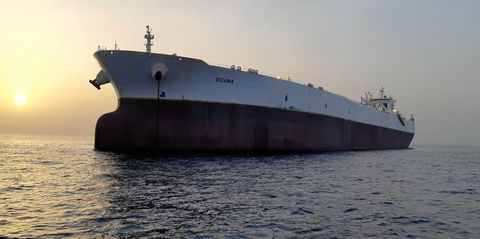Norwegian investment bank Cleaves Securities has seen a big gain in value from its shipping fund over its first year of operation.
The Cleaves Shipping Fund, run by the Cleaves Asset Management (CAM) unit, logged a rate of return of 28.8% in the 12 months to 30 June.
This made it the fourth-best performing Nordic hedge fund according to Hedge Nordic.
Oslo-based Cleaves called the first completed full year “satisfactory”.
“The fund invests exclusively in listed shipping companies and will as such be subject to the shipping markets’ volatility,” CAM head of fund management Carl Synvis said.
“However, possessing internally one of the highest-ranked global shipping research teams, our strategies and decision-making are based on solid fundamental macroeconomic and company research.”
Synvis said he was confident that investments in a selected portfolio of listed shipping companies with a high degree of liquidity across various segments will continue to offer attractive returns.
This is CAM’s only fund currently, Synvis told TradeWinds.
CAM reorganised with new management last year after the departure of shipping fund manager Joakim Hannisdahl in a dispute over strategic direction.
The top performer over the last year was Idan Ofer-backed LNG carrier owner Cool Company, up 38%, with Danish tanker owner Torm rising 22.7% and Teekay Tankers 16.5%.
Other gainers included Frontline, BW LPG and Awilco LNG.
Frontline leading the way
The fund has 37.5% of its portfolio invested in tankers, with bulkers making up 23.7%, LNG carriers on 7.2%, chemical tankers with 2%, and the rest in cash.
Frontline accounts for 9.2% of the book alone, with International Seaways on 8.1%.
In a note to investors, Synvis said: “As an investor in the fund since April, I have a positive outlook on its future performance. I anticipate robust markets, particularly for oil tankers and dry bulk companies, and I intend to increase my investment in the fund while taking advantage of the current market weakness.”
Traditionally, he said the tanker market experiences its weakest period during the summer months, with rates typically increasing from late September or early October.
“However, a noteworthy difference at present, as seen in the recent spike in VLCC rates, is that the markets are already tight,” Synvis said.
“Consequently, seasonally stronger demand is likely to have a relatively significant impact on freight rates. We believe there is an upside risk for an unusually early start to the winter market.”
Negative fleet growth
The investment manager said one of the most appealing factors for tankers in the next two to three years is the low growth in supply.
Cleaves is expecting low to negative fleet growth for both crude and product tankers from 2023 to 2025, driving continued high utilisation.
“Overall, with limited supply growth, a solid tanker market does not rely heavily on significant growth in global oil demand but is influenced by inefficiencies and re-routing resulting from the conflict in Ukraine,” Synvis said.
“We plan to take advantage of the current seasonal weakness in freight rates and equities to position ourselves for what we believe will be an exceptional winter market.”





